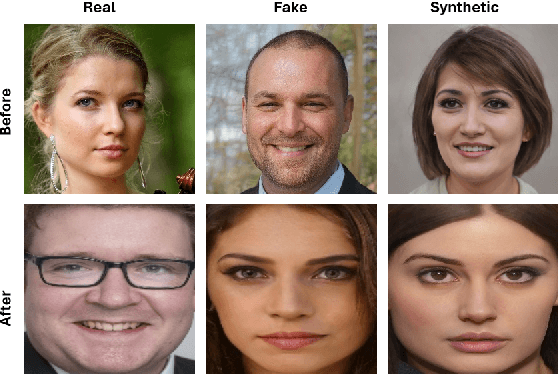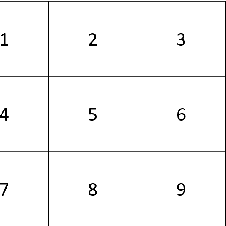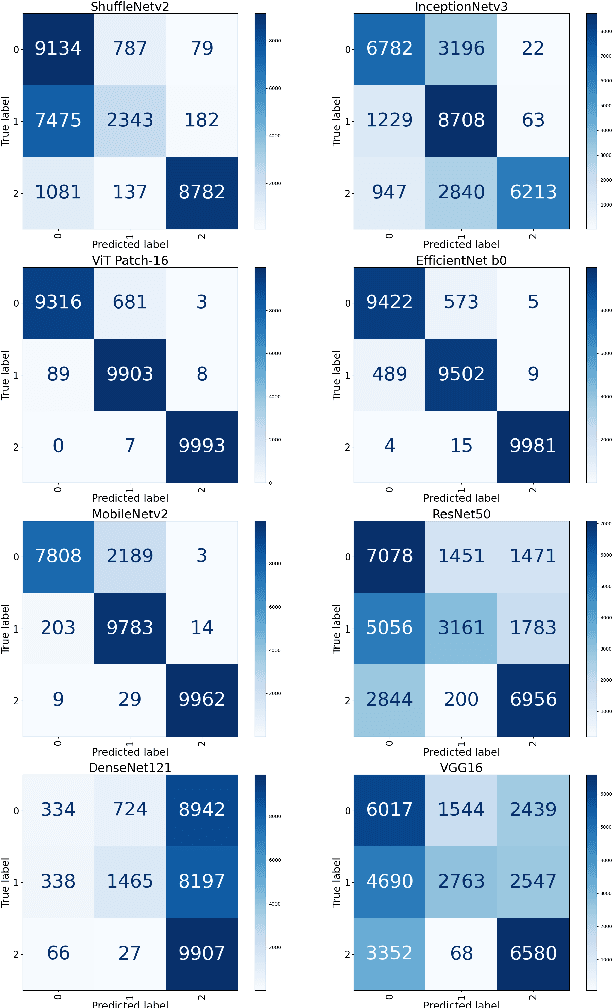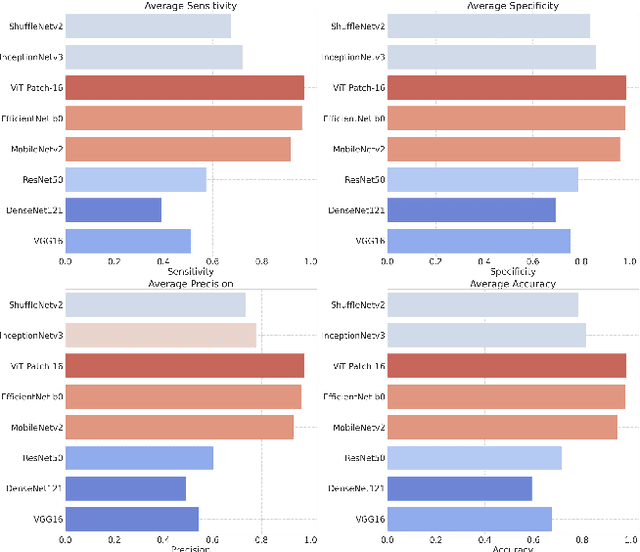Muhammad Riyyan Khan
Real, fake and synthetic faces -- does the coin have three sides?
Apr 02, 2024



Abstract:With the ever-growing power of generative artificial intelligence, deepfake and artificially generated (synthetic) media have continued to spread online, which creates various ethical and moral concerns regarding their usage. To tackle this, we thus present a novel exploration of the trends and patterns observed in real, deepfake and synthetic facial images. The proposed analysis is done in two parts: firstly, we incorporate eight deep learning models and analyze their performances in distinguishing between the three classes of images. Next, we look to further delve into the similarities and differences between these three sets of images by investigating their image properties both in the context of the entire image as well as in the context of specific regions within the image. ANOVA test was also performed and provided further clarity amongst the patterns associated between the images of the three classes. From our findings, we observe that the investigated deeplearning models found it easier to detect synthetic facial images, with the ViT Patch-16 model performing best on this task with a class-averaged sensitivity, specificity, precision, and accuracy of 97.37%, 98.69%, 97.48%, and 98.25%, respectively. This observation was supported by further analysis of various image properties. We saw noticeable differences across the three category of images. This analysis can help us build better algorithms for facial image generation, and also shows that synthetic, deepfake and real face images are indeed three different classes.
Generation and Detection of Sign Language Deepfakes -- A Linguistic and Visual Analysis
Apr 01, 2024Abstract:A question in the realm of deepfakes is slowly emerging pertaining to whether we can go beyond facial deepfakes and whether it would be beneficial to society. Therefore, this research presents a positive application of deepfake technology in upper body generation, while performing sign-language for the Deaf and Hard of Hearing (DHoH) community. The resulting videos are later vetted with a sign language expert. This is particularly helpful, given the intricate nature of sign language, a scarcity of sign language experts, and potential benefits for health and education. The objectives of this work encompass constructing a reliable deepfake dataset, evaluating its technical and visual credibility through computer vision and natural language processing models, and assessing the plausibility of the generated content. With over 1200 videos, featuring both previously seen and unseen individuals for the generation model, using the help of a sign language expert, we establish a deepfake dataset in sign language that can further be utilized to detect fake videos that may target certain people of determination.
 Add to Chrome
Add to Chrome Add to Firefox
Add to Firefox Add to Edge
Add to Edge